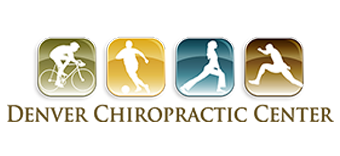Mental Attitude: Is Stress Contagious?
A new report finds that not only do babies pick up on their mother’s stress but their bodies will also mimic physiological changes. Researchers found that when mothers were stressed and then reunited with their infant, the child quickly adopted his/her mother’s stress response, including a corresponding change in heart rate. Lead author Dr. Sara Waters writes, “Before infants are verbal and able to express themselves fully, we can overlook how exquisitely attuned they are to the emotional tenor of their caregivers… Your infant may not be able to tell you that you seem stressed or ask you what is wrong, but our work shows that, as soon as she is in your arms, she is picking up on the bodily responses accompanying your emotional state and immediately begins to feel in her own body your own negative emotion.”
Psychological Science, February 2014
Health Alert: Buckle Your Children Up!
Tragically, car accidents still claim the lives of over 9,000 American children each year. Researchers working for the Centers for Disease Control and Prevention (CDC) believe that nearly a third of these deaths can be prevented if parents simply secured their children in age/size appropriate car seats. They point out that in states where car seats are required until ages 7-8, more children are put into car and booster seats and serious injury rates are 17% lower than in states without such laws.
Centers for Disease Control and Prevention, February 2014
Diet: No More Than 2-3 Cups Per Day…
Using current research on the over-consumption of caffeine as a guide, Dr. Laura Juliano, co-author of “Caffeine Use Disorder: A Comprehensive Review and Research Agenda,” recommends healthy adults limit caffeine consumption to no more than two to three cups of coffee per day (about 400 mg/day) and pregnant women to no more than half that amount. She also recommends people with health problems such as anxiety, insomnia, heart problems, or urinary incontinence limit or even eliminate caffeine consumption.
Journal of Caffeine Research, February 2014
Exercise: Sitting and Disability.
For the first time, a study has labeled sedentary activity as a risk factor for disability for people over age 60. Using data on over 2,000 adults over 60 years of age, researchers were shocked to discover that being sedentary is just as large a risk factor for disability as not exercising, and the risk of disability dramatically increases for each additional hour spent sitting at a computer or on the couch watching TV.
Journal of Physical Activity & Health, February 2014
Chiropractic: Acute Low Back Pain Treatment Comparison.
In this study, researchers compared the efficacy of spinal manipulation to diclofenac, a non-steroidal anti-inflammatory drug (NSAID), for the treatment of acute low back pain. Based on outcomes including self-rated physical disability, function, time missed from work, and rescue medication use during the following 12 weeks, spinal manipulation proved to be a significantly better treatment.
Spine, April 2013
Wellness/Prevention: Mammography Recommended for Women in Their 40s.
While the United States Preventive Services Task Force’s 2009 guidelines recommend against routine mammograms for women in their 40s, new research shows that regular screenings would benefit this age group by helping doctors catch the disease when it can still be treated without extensive surgery or chemotherapy. Current statistics show that one in eight women will develop breast cancer, and if the disease is caught early enough, the five-year survival rate is 97%.
American Journal of Roentgenology, February 2014
